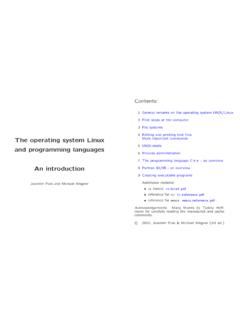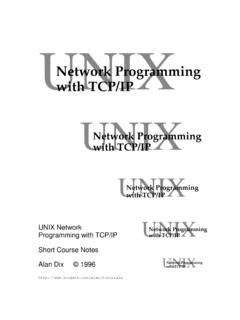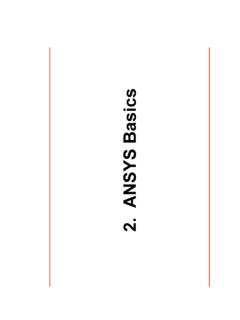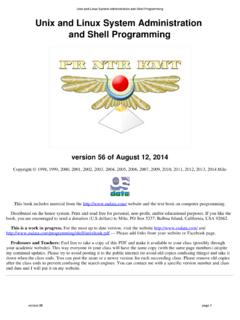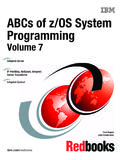Transcription of The operating system Linux and programming …
1 The operating system Linuxand programming languagesAn introductionJoachim Puls and Michael WegnerContents:1 General remarks on the operating system unix /Linux2 First steps at the computer3 File systems4 Editing and printing text filesMore important commands5 unix -shells6 Process administration7 The programming language C++ - an overview8 Fortran 90/95 - an overview9 Creating executable programsAdditional material reference reference Many thanks to Tadziu Hoff-mann for carefully reading the manuscript and 2010, Joachim Puls & Michael Wegner (1st ed.)1 General remarks on the operat-ing system unix /LinuxClassification of unix /LinuxUNIX is aMulti-User/Multi-Tasking operating systemand exists in many different versions ( derivates ):Solaris, AIX, XENIX, HP-UX, SINIX, programsOperating systemHardwareUserOperating system (OS): Sum of all programs whicharerequired to operate a computerand which controland monitor the application featuresUNIX has been originally written in the programminglanguage C, and is therefore a classical platformfor C-programs.
2 unix contains well suited en-vironments for program development (C, C++,Java, Fortran, ..). is mainly used for scientific-technical applicationson mainframes and workstations, but has be-come, because ofLinux, also popular for classicalPC-applications throughout the last years. is perfectly suited for application in systems and networks require an admin-istrator. offers various alternatives for the solution of mosttasks. The multitude of commands (more thanin any other OS) are brief and flexible. is originally command-line oriented, but can beused via a graphical user interface (X Windowsystem).Linuxis available (also via internet) in differentdis-tributions( , Fedora, Debian etc.). Mean-while there is a variety ofdirect-start (live) systems,which can be started, without installation, directlyfrom CD or other bootable storage devices (Knop-pix, Ubuntu.)
3 There are also interesting miniversions (<100 MB) designed for a start from USB-sticks ( , Puppy). The source code of Linux is Peek, J., et al.: unix Power Reilly Media 2002 (3rd edition). Gilly, D., et al.: unix in a Reilly, K oln. 1998 (1st edition). Wielsch,M.:Das gro e Buch zu Becker, D usseldorf. 1994 (1st edition). and numerous other text books online- First steps at the computerUser, logon, logoffSince unix is amulti-useroperating system , it candeal with several users simultaneously. Each userneeds auser user has a personal environment (home di-rectory, shell), which can be accessed only by her-/himself (and by the system adminstrator and thosepeople who know the password legitimate or byhacking).
4 Inside the system the user is identified by hisuser ID(UID) and his group identity (group ID, GID).There are two user types: normal users withrestrictedrights and the system administrator (root) with all latter is responsible for the installation, con-figuration and maintenance of the system as wellas the user user has to logon and to logoff from the system (login/logout). Each user account is protected by :Login to the system with your user account!4 Graphical user interfaceOriginally, unix is command-line oriented. TheXWindow systemenables convenient interaction via awindow-oriented graphical interface, similar to manageris responsible for the manage-ment and display of the individual windows.
5 Eachwindow manager (and there are a variety of such man-agers) can be distinguished by its ownLook and Feel(appearance of window decorations and control de-vices etc.). Most window managers can be choosenat the for simple window managers: twm: very simple and resource-saving mwm: Motif window manager, more common andmore advanced xfce: convenient, simple, and resource-saving(recommended for use in virtual machines)Moreover, almost all Linux distributions providegraphicaldesktop environmentssuch asKDEorGNOME, which have a functionality far beyond simplewindow :xterm [options]Though there is a graphical interface, unix needsthe possibility for direct command input for practicaluse. Therefore, at least one terminal window needsto be open.
6 This can be accomplished via the windowmanager or the desktop environment ( console )More windows can then be opened with the , all unix commands have a variety ofop-tions, which usually begin with-. For the commandswhich will be introduced in the following, we will pro-vide only the most important :wegner@arber:~ >xterm -geo 80x40 -fn 10x20 The commandxtermis called with two options-geo,-fn, which, in this case, need additionalarguments(width and height of window, font name & size).Exercise:1. Open a terminal window ( terminal program ) via From there, start anotherxterm!6commandmanSyntax:man commandman -k expressiondisplays the manual pages ( man pages ) for the -ksearches for man pages contain-ing theexpressionin theNAME section.
7 A man pageusually consists of the following sections NAME command and purpose SYNOPSIS syntax of command DESCRIPTIONof command effect FILES which are modified and/or needed OPTIONSif present EXAMPLE(S)for application (rarely) BUGS errors, if known SEE ALSO other commands in the same contextExercise:Display information about the commandxterm!7commandpasswdSyntax:passwd sets a new should be constructed from a combinationof letters, digits and special characters, and shouldnot appear in any dictionary or similar list. Otherwise,the password can be hacked by systematic search command to set/change the password andthe required conventions (length, number of dig-its/letters/special characters) can vary from systemto system .
8 The following example is a common one, , valid for the workstations at the CIP Pool (butnot for the workstations of the USM).Example:wegner@arber:~ >passwdChanging password for wegnerOld password:myoldpasswdEnter the new password(minimum of 5, maximum of 8 characters)Please use a combinationof upper and lower case letters and password:mynewpasswdRe-enter new password:mynewpasswdPassword :----> Ihr neues Passwort ist in 5 Minutenim gesamten Pool aktiv! <-----Connection to @arber:~ >9commandwho, whoamiSyntax:whowhoamiwhodisplays information about all users which arelogged into the system user name, terminal where the corresponding user is working, time of :wegner@arber:~ >whoamiarber!wegner pts/5 Oct 20 12:4510 Working at external terminalsTo login to a distant host, one has to provide thecorresponding IP address, either numerical or as thecomplete host In local networks(CIP-Pool), the brief host name (without domain) issufficient.
9 To establish the connection and to encryptthe transmitted data, one should use exclusively theso-called secure commands. Avoidftpand usesftpinstead. Withftp, even the password isnotencoded!commandsshSyntax:ssh (-4) -X -l username hostnamessh (-4) -X username@hostnameEnables logging in to an arbitrary host which can belocated via an IP address (if one knows the user ac-count and the password). Logoff withexit, case, the option-4(without brackets) forces anIPv4 connection (if IPv6 is not working)Example:wegner@arber:~ >ssh -X -l wegner :mypasswdLast login: Sun Oct 22 ..**Mitteilungen**wegner@lxsrv1:~ > logoutConnection to (if connection within own cluster)Example:wegner@arber:~ >ssh -X wegner@arberLast login: Sun Oct 22.
10 Etc. (keine Passwort-Abfrage)An additional advantage of thesecure shellis thatthe distant hosthostnamecan display X applicationson the local terminal, without requiring the commandxhost(as in earlier times). For certain hosts, the com-mandsshrequires the option-Xto enable this copy files from one host to another, the commandscp( secure copy ) is used, see :scp (-4) file1 username@hostname:file2scp (-4) username@hostname:file1 file2 The first command copies the local filefile1to theexternal host under namefile2, the second commandvice versa. Note the colon!scp -renables to copycomplete directoriesrecursively, comparecp File systemsLogics, file types In unix everything is a file. The followingfile- system objectscan be found normal (text-) files executable files (binary files orshell scripts) directories device files pipes symbolic or hardlinks(references to files)All files and file system objects are ordered within ahierarchicalfile treewith exactly oneroot directory /.
